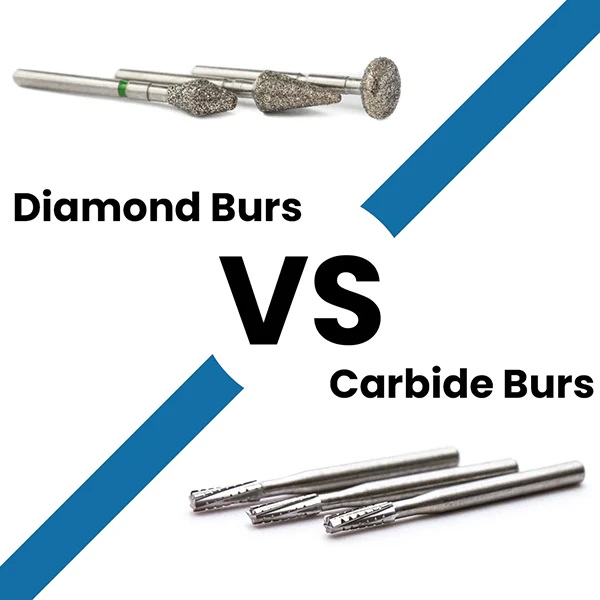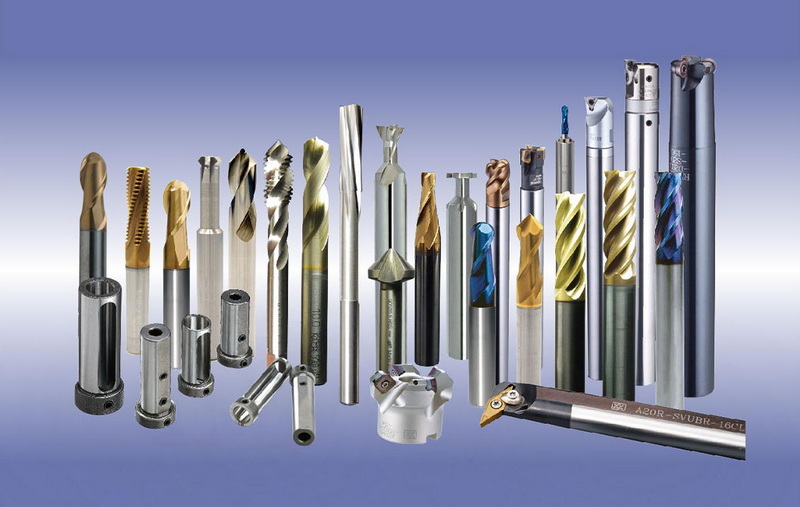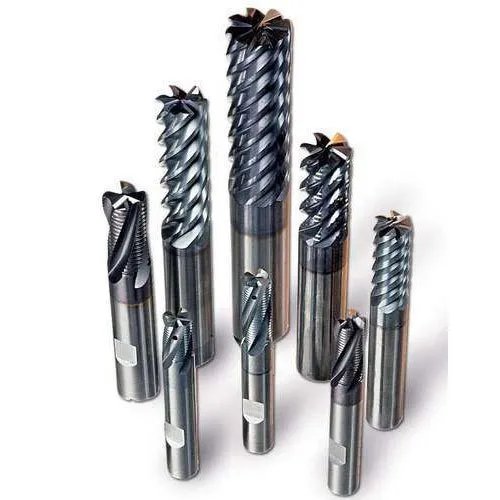Content Menu
● Introduction to Diamond and Tungsten Carbide
>> Diamond
>> Tungsten Carbide
● Hardness Comparison
● Applications of Diamond and Tungsten Carbide
>> Diamond Applications
>> Tungsten Carbide Applications
● Cost and Availability
● Manufacturing Process
>> Diamond Manufacturing
>> Tungsten Carbide Manufacturing
● Environmental Impact
● Future Developments
● Conclusion
● FAQ
>> 1. What is the primary difference in hardness between diamond and tungsten carbide?
>> 2. Which material is more expensive, diamond or tungsten carbide?
>> 3. What are the main applications of diamond?
>> 4. Why is tungsten carbide preferred over diamond in some applications?
>> 5. Can tungsten carbide scratch diamond?
● Citations:
Diamond and tungsten carbide are two of the hardest materials known, each with unique properties that make them valuable in various applications. In this article, we will delve into the characteristics of both materials, comparing their hardness, applications, and other relevant properties.

Introduction to Diamond and Tungsten Carbide
Diamond
Diamond is renowned as the hardest naturally occurring substance, with a Mohs hardness of 10. It is composed of carbon atoms arranged in a crystal lattice structure, which provides it with exceptional hardness and thermal conductivity. Diamonds are used in cutting tools, high-pressure experiments, jewelry, and certain electronic applications due to their brilliance and durability.
Diamond Properties:
- Hardness: Mohs scale rating of 10.
- Thermal Conductivity: Excellent, making it useful in electronics and heat sinks.
- Optical Properties: Known for brilliance and light dispersion.
- Applications: Cutting tools, abrasives, luxury jewelry.
Diamonds are also valued for their rarity and aesthetic appeal, making them highly sought after in the luxury goods market. The process of mining and cutting diamonds is complex and labor-intensive, contributing to their high cost. Synthetic diamonds, which are produced through high-pressure high-temperature (HPHT) or chemical vapor deposition (CVD) processes, offer a more affordable alternative while maintaining many of the natural diamond's properties.
Tungsten Carbide
Tungsten carbide is a composite material made from tungsten and carbon atoms, known for its hardness and durability. It has a Mohs hardness rating between 8.5 and 9.5, making it one of the hardest materials after diamond. Tungsten carbide is widely used in cutting tools, mining equipment, and jewelry due to its strength and scratch resistance.
Tungsten Carbide Properties:
- Hardness: Mohs scale rating of 8.5 to 9.5.
- Density: High density, heavier than many materials.
- Corrosion Resistance: Resistant to corrosion and oxidation.
- Applications: Cutting tools, mining equipment, wear-resistant components.
Tungsten carbide is often used in industrial settings where high wear resistance is required. Its ability to withstand extreme conditions makes it ideal for drilling and excavation tools. Additionally, tungsten carbide is used in the production of wear-resistant parts for machinery and in the manufacture of armor-piercing ammunition due to its high density and hardness.
Hardness Comparison
Diamond is harder than tungsten carbide, with a Mohs hardness of 10 compared to tungsten carbide's range of 8.5 to 9.5. This means diamond can scratch tungsten carbide, but not vice versa. However, tungsten carbide is generally tougher than diamond, meaning it can absorb more energy before fracturing.
| Material | Mohs Hardness | Vickers Hardness (HV) |
| Diamond | 10 | ~10,000 |
| Tungsten Carbide | 8.5-9.5 | ~2,400 |
The Vickers hardness test provides a more precise measurement of hardness, showing that diamond is significantly harder than tungsten carbide in terms of resistance to indentation. This difference in hardness affects their use in various applications, with diamond being preferred for precision cutting and high-pressure experiments.
Applications of Diamond and Tungsten Carbide
Diamond Applications
1. Cutting Tools: Used for precision cutting of hard materials like ceramics.
2. High-Pressure Experiments: Utilized in diamond anvil cells for extreme pressure conditions.
3. Jewelry: Valued for its brilliance and durability in luxury items.
4. Electronics: Employed due to its excellent thermal conductivity.
Diamonds are also used in medical devices and in certain types of windows due to their transparency and hardness. The use of diamond in electronics is particularly noteworthy, as it can efficiently dissipate heat, making it ideal for high-power electronic components.
Tungsten Carbide Applications
1. Cutting Tools: Extensively used in metal cutting due to its hardness and wear resistance.
2. Mining Equipment: Ideal for drilling and excavation tools.
3. Wear-Resistant Components: Used in machinery parts requiring high durability.
4. Jewelry: Popular in men's wedding bands for its durability and modern appearance.
Tungsten carbide is also used in military applications, such as in armor-piercing rounds, due to its high density and hardness. Its ability to maintain its shape under high stress makes it suitable for use in extreme environments.

Cost and Availability
Diamond is more expensive than tungsten carbide due to its rarity and the complexity of mining and processing. Tungsten carbide, while less expensive, offers a cost-effective alternative for applications where extreme hardness is required but diamond-level hardness is not necessary. The cost-effectiveness of tungsten carbide makes it a preferred choice for many industrial applications.
Manufacturing Process
The manufacturing process for diamond and tungsten carbide differs significantly. Diamonds are naturally occurring and must be mined and cut, while tungsten carbide is synthesized through a process involving the reaction of tungsten with carbon at high temperatures.
Diamond Manufacturing
Diamonds are mined from volcanic pipes and then cut and polished to enhance their brilliance. The cutting process involves using other diamonds to shape and polish the stone due to its extreme hardness. Synthetic diamonds are produced through advanced technologies that replicate the natural conditions under which diamonds form, offering a more affordable and sustainable option.
Tungsten Carbide Manufacturing
Tungsten carbide is produced by mixing tungsten powder with carbon and then sintering the mixture at high temperatures. This process allows for the creation of complex shapes and forms, making it versatile for various applications. The sintering process involves applying high pressure and temperature to ensure the material achieves its optimal hardness and density.
Environmental Impact
Both diamond and tungsten carbide have environmental implications associated with their production. Diamond mining can lead to significant environmental damage, including deforestation and water pollution. Tungsten carbide production involves the use of tungsten, which is often mined in conflict zones, raising ethical concerns. Efforts are being made to improve mining practices and source materials more sustainably.
Future Developments
In recent years, there has been a focus on developing synthetic diamonds that can mimic the properties of natural diamonds at a lower cost. Additionally, advancements in materials science are leading to the development of new composite materials that combine the hardness of tungsten carbide with other desirable properties, such as increased toughness or lighter weight. These advancements are expected to expand the range of applications for both diamond and tungsten carbide.
Conclusion
In conclusion, diamond is indeed harder than tungsten carbide, with a Mohs hardness of 10 compared to tungsten carbide's range of 8.5 to 9.5. However, tungsten carbide's toughness and cost-effectiveness make it a valuable choice for many industrial applications. The choice between diamond and tungsten carbide depends on the specific requirements of the application, including hardness, toughness, and cost considerations.

FAQ
1. What is the primary difference in hardness between diamond and tungsten carbide?
Diamond has a Mohs hardness of 10, while tungsten carbide ranges from 8.5 to 9.5. This means diamond is significantly harder than tungsten carbide.
2. Which material is more expensive, diamond or tungsten carbide?
Diamond is more expensive due to its rarity and the complexity involved in mining and processing.
3. What are the main applications of diamond?
Diamonds are used in cutting tools, high-pressure experiments, jewelry, and certain electronic applications.
4. Why is tungsten carbide preferred over diamond in some applications?
Tungsten carbide is preferred due to its toughness, cost-effectiveness, and ability to withstand impact better than diamond.
5. Can tungsten carbide scratch diamond?
No, tungsten carbide cannot scratch diamond. Diamond is harder and can scratch tungsten carbide.
Citations:
[1] https://www.zhongbocarbide.com/is-tungsten-carbide-harder-than-diamond.html
[2] https://www.zhongbocarbide.com/how-hard-is-tungsten-carbide-vs-diamond.html
[3] https://www.makeitfrom.com/compare/Polycrystalline-CVD-Diamond/Tungsten-Carbide-WC
[4] https://en.wikipedia.org/wiki/Diamond
[5] https://en.wikipedia.org/wiki/Tungsten_carbide
[6] https://www.burdental.com/blog/comparison-of-dental-diamond-burs-and-tungsten-carbide-burs
[7] https://www.zzcrcarbide.com/news/which-is-harder-compared-to-tungsten-carbide-and-diamond/
[8] https://www.linde-amt.com/resource-library/articles/tungsten-carbide
[9] https://www.reddit.com/r/Gemstones/comments/1ahga1f/what_gemstone_other_than_diamond_is_harder_than/
[10] https://compraco.com.br/blogs/industria/o-que-e-mais-duro-carboneto-de-tungstenio-ou-diamante
[11] https://www.carbide-part.com/blog/tungsten-carbide-hardness-vs-diamond/
[12] https://www.forbes.com/sites/startswithabang/2019/06/18/there-are-6-strongest-materials-on-earth-that-are-harder-than-diamonds/
[13] https://www.shutterstock.com/search/diamond-hardness
[14] https://www.istockphoto.com/photos/hard-diamond
[15] https://eagle-dental-burs.com/blogs/articles/diamond-vs-carbide
[16] https://www.alamy.com/stock-photo/diamond-hardness.html?cutout=1
[17] https://www.mdpi.com/2311-5629/8/4/77
[18] https://www.refractorymetal.org/tungsten-carbide-uses-properties.html
[19] https://telconpcd.com/pcd-vs-carbide-who-has-better-tool-value/
[20] https://www.bangerter.com/en/tungsten-carbide
















